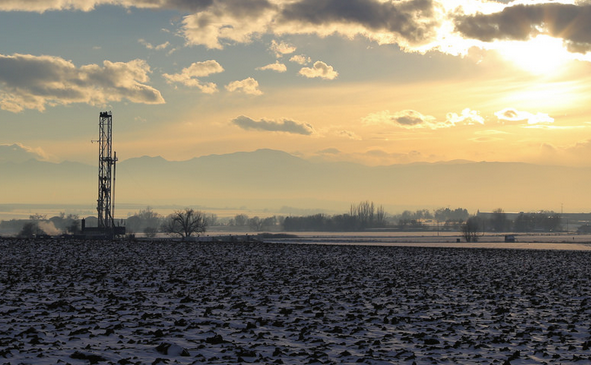Natural Gas May Be a Lot Worse for Climate Than Suspected

Natural gas and oil fields may well be releasing far more climate-killing methane into the atmosphere than previously thought, undermining natural gas' usefulness as an alternative "bridge fuel" for society to use to wean itself off coal in fighting climate change.
That's according to a new federally funded study to be published in the Journal of Geophysical Research: Atmospheres. In the study, conducted by researchers from NOAA's Cooperative Institute for Research in Environmental Sciences at the University of Colorado Boulder (CIRES), oil and gas fields in Weld County, Colorado were revealed to be leaking three times as much methane as expected into the atmosphere. Methane, a primary constituent of natural gas, is a greenhouse gas 34 times more potent as carbon dioxide.
The researchers also found seven times as much atmospheric benzene coming off the wells as had been expected, and about twice the expected levels of a set of volatile organic compounds that contribute to ozone formation. Benzene is a known human carcinogen.
"These discrepancies are substantial," said lead author Gabrielle Petron, CIRES atmospheric scientist. "Emission estimates or 'inventories' are the primary tool that policy makers and regulators use to evaluate air quality and climate impacts of various sources, including oil and gas sources. If they're off, it's important to know."
Using small aircraft to sample atmorpheric pollutants while ground stations around Weld County measured wind speed and direction, Petron and her colleagues calculated that Weld County's approximately 24,000 oil and gas wells were leaking 26 metric tons of methane per hour during the two-day study period in May 2012.
For perspective, that's the equivalent of emitting 884 metric tons of CO2 into the atmosphere each hour, while an average-sized coal plant emits around 530 metric tons of CO2 in that same hour. And those methane leaks are in addition to the greenhouse gases released when the natural gas is burned as fuel.
The new study builds on earlier work by Petron and her colleagues, published in 2008, in which a much less-developed Weld County, with only 14,000 active wells at the time, were found to be leaking twice as much methane into the air as expected. This year's work, performed with more accurate tools, confirms that accidental emissions of methane and other noxious substances from oil and gas well is even worse than it looked in 2008.
CIRES scientists and colleagues from NASA, the National Center for Atmospheric Research (NCAR), and NOAA will be continuing their work studying atmospheric pollutants in northeastern Colorado, with a sampling blitz planned for the summer in which researchers will be using balloons and mobile ground stations in addition to small aircraft in order to get an even more accurate view of what Colorado oil and gas wells are leaking into the atmosphere.
"This summer's field experiment will provide us the information we need to understand all the key processes that contribute to air pollution in the Front Range," said NCAR scientist Gabriele Pfister.